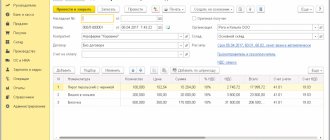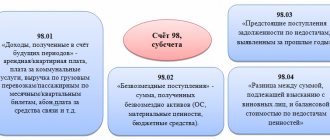Regulatory framework
Postings on wages in a budgetary institution are regulated by several legislative acts, in particular:
- A unified chart of accounts for government agencies, local governments, management bodies of state extra-budgetary funds, state academies of sciences, state (municipal) institutions (Order of the Ministry of Finance of the Russian Federation dated December 1, 2010 No. 157n);
- Instructions for the use of the chart of accounts for budget accounting (Order of the Ministry of Finance dated December 16, 2010 No. 174n).
What is included in employee salaries in accordance with current legislation, read the material “Art. 135 of the Labor Code of the Russian Federation - questions and answers .
State institutions
For government institutions, upon receipt of receivables, the amount in full is subject to reimbursement to the revenue of the corresponding budget. Returns must be made within 5 business days of receipt. The reflection of transactions in accounting depends on whether the institution is vested with the powers of a revenue administrator or not.
The formation of correspondence in the budget is determined by the requirements of the Instructions approved by orders of the Ministry of Finance of the Russian Federation dated December 1, 2010 No. 157n and dated December 6, 2010 No. 162n (hereinafter referred to as Instructions No. 157n and Instructions No. 162n, respectively).
According to Instruction No. 157n, to record the reflection of the amounts of settlements for advance payments that were not returned by the counterparty, for the amounts of debt of accountable persons that were not returned in a timely manner, account 209 30 “Calculations for compensation of costs” is used. Please note that cases of its application are listed in the regulatory act, including:
- termination of a contract or other agreements, including by a court decision;
- carrying out claims against the counterparty;
- presenting a claim for the return of receivables to another person.
A government institution also uses account 209 00 in cases where it is vested with the powers of a cash receipts administrator. Administrators attribute income from the return of receivables to Article 130 “Income from the provision of paid services (work)” as compensation for state expenses.
When a counterparty decides independently and voluntarily to repay a debt to an institution, the accounts in which this debt was reflected are used to reflect it:
- 206 00 “Settlements for advances issued”;
- 208 00 “Settlements with accountable persons”;
- 303 00 “Calculations for payments to the budget.”
But Instruction No. 162n regulates the composition of correspondence to reflect transactions of receipt of funds for the restoration of previously made expenses (advance payments) to repay receivables.
If a government agency is not a revenue administrator, the transfer of amounts of receivables to budget revenue is reflected in accordance with clause 104 of Instruction No. 162n. When accessing it, you can see that the institution takes into account settlements with the budget revenue administrator, who exercises certain powers to administer cash receipts, using account 304.01 “Internal revenue settlements.”
The procedure for generating salary transactions in a budget organization
In the budgetary sphere, to detail the flow of funds, a classification of operations of the general government sector (abbreviated as KOSGU) has been developed. In this case, when generating transactions, a code should be added to the accounting account that determines the type of receipt or disposal of an accounting object in accordance with this classification.
In particular, to calculate salaries, an accountant needs to use the following KOSGU codes:
- 211 - “Salaries”: here it is necessary to include expenses for all payments of funds in accordance with contractual obligations; in addition, it reflects various deductions from the employee’s accrued salary (union membership dues, personal income tax, compensation for moral damage caused by the employee, alimony, etc.);
- 212 - “Other payments”: used to accrue expenses for payment of additional payments and compensations not related to wages (for example, daily allowances for business trips, compensation for the use of a car, etc.);
- benefits, for example, those paid at the expense of the Social Insurance Fund to employees, are classified under subsection 213 (including maternity benefits, one-time benefits for the birth of a child, monthly child care benefits, etc.).
Also, for the correct distribution of cash flow types, we will need the following KOSGU:
- 730 - “Increase in other accounts payable”;
- 830 - “Reduction of other accounts payable”;
- 610 - “Disposal from budget accounts.”
Read about how the budget accounting account number is linked to the value of KOSGU here.
CLARIFICATIONS from ConsultantPlus: As of 03/09/2021, changes have been made to KOSGU. In terms of wages, for example, subsection 211 should include compensation for unused vacation upon dismissal. And from subarticle 2013, benefits that employers paid at the expense of the Social Insurance Fund were removed. Read more about the changes in ConsultantPlus. If you do not have access to the K+ system, get a trial online access for free.
Postings on salaries in a budgetary institution
Based on the above regulatory documents, we will draw up the main entries for wages in the accounting of a budgetary organization.
1. Salary, vacation pay, bonus have been accrued.
In this case, wage costs can be attributed to several different accounting accounts:
- Dt 0 401 20 211 “Salary expenses” Kt 0 302 11 730 “Increase in payables for wages”
- Dt 0 109 61 211 “Wage costs in the cost of finished products” Kt 0 302 11 730
- Dt 0 109 71 211 “Overhead costs of production of finished products, work, services for wages” Kt 0 302 11 730
- Dt 0 109 81 211 “General business expenses for the production of finished products, work, wage services” Kt 0 302 11 730
2. Personal income tax accrued:
Dt 0 30211 830 “Reducing payables for wages” Kt 0 30301 730 “Increasing payables for personal income tax”
Recommendations from ConsultantPlus experts will help you correctly calculate personal income tax on your salary. Get trial access and go to the Ready solution. It's free
3. The accrual according to the writ of execution is reflected:
Dt 0 30211 830 Kt 0 304 03 730 “Increase in accounts payable for settlements of deductions from wage payments”
Should deductions under a writ of execution be made from the amount of the employee’s income before or after deduction of personal income tax? You will find the answer to this question in a consultation prepared by K+ experts based on the opinion of an official from the Ministry of Labor. Get free demo access and proceed to the material.
4. Salaries paid from the cash register:
Dt 0 30211 830 Kt 0 20134 610 “Cash funds of a budgetary institution”
5. Salaries are transferred to bank cards:
Dt 0 302 11 830 Kt 0 20111 610 “Disposal of the institution’s funds from personal accounts with the treasury authority”
6. Unpaid amounts deposited:
Dt 0 30211 830 Kt 0 30402 730 “Increase in accounts payable to depositors”
7. Contributions to the Pension Fund, Social Insurance Fund, and Federal Compulsory Medical Insurance Fund have been accrued.
Every month, each organization pays insurance contributions to the Pension Fund, mandatory social contributions to the Social Insurance Fund and the Federal Compulsory Medical Insurance Fund. The object of taxation is payments and other remuneration accrued by employers in favor of employees.
Postings for accrual of contributions are generated as follows. The debit account will be permanent - Dt 0 40120 213 “Expenses for accruals for wage payments.” But the corresponding account will depend on the type of accrual:
- Kt 0 303 10 730 “Increase in accounts payable for insurance premiums for compulsory health insurance”;
- Kt 0 303 02 730 “Increase in accounts payable for contributions to compulsory social insurance”;
- Kt 0 303 06 730 “Increase in accounts payable for insurance against accidents and occupational diseases”;
- Kt 0 303 07 730 “Increase in accounts payable for compulsory medical insurance.”
8. The salary was issued to the accountable person distributing the salary from the cash register:
Dt 0 20811 560 “Settlements with accountable persons for salaries” Kt 0 20134 610 “Cash in the institution’s cash desk.”
9. An employee received a salary from the distributing person:
Dt 0 30211 830 “Reduction of payables for wages” Kt 0 20811 660 “Settlements with accountable persons for wages.”
For information on transactions used to reflect payroll transactions in commercial organizations, read the article “Payroll transactions and accounting.”
Transactions on “input” VAT (account 210 12 000)
As noted above, the amount of VAT payable to the budget is reduced by the amount of tax deductions, which are concentrated in account 210 10,000 “Calculations for tax deductions for VAT”.
Based on clause 2 of Art. 171 of the Tax Code of the Russian Federation, VAT amounts presented to the taxpayer when purchasing goods (work, services) are subject to deductions.
With regard to VAT amounts presented to an autonomous institution by suppliers of goods (works, services, property rights), it is necessary to keep in mind the following that the right to a VAT tax deduction arises only if the conditions listed in paragraph 2 of Art. 171 and paragraph 1 of Art. 172 of the Tax Code of the Russian Federation , namely:
- goods (works, services, property rights) were acquired by the institution for use in transactions subject to VAT;
- purchased goods (works, services, property rights) are accepted for accounting;
- the institution has a correctly executed supplier invoice.
As the Ministry of Finance explained in 03-07-09/39449 dated 08.08.2014 , if an invoice is issued by the taxpayer-seller in one tax period, and received by the taxpayer-buyer in the next tax period, the VAT amount should be deducted in that tax period in which the invoice was received.
In accounting, to reflect the amounts of “input” VAT, account 0 210 12 000 “Calculations for VAT on acquired material assets, works, services” is intended.
VAT amounts presented to an autonomous institution by suppliers (contractors) on acquired non-financial assets (work performed, services provided), which are not included in the cost of such non-financial assets (work, services), are reflected in the accounting records as follows:
Account debit 0 210 12 000 “VAT calculations for acquired material assets, works, services”
Credit of accounts 0 208 00 000 “Settlements with accountable persons”, 0 302 00 000 “Settlements for accepted obligations”
When writing off VAT amounts accepted by an institution as a tax deduction, an accounting entry is made:
Debit account 0 303 04 000 “Calculations for value added tax”
Account credit 0 210 12 000 “VAT calculations for acquired material assets, works, services”
An autonomous institution, as part of its income-generating activity, has manufactured products intended for sale. For this, various materials were purchased from suppliers in the amount of 11,800 rubles . (including VAT (18%) - 1,800 rubles ), wages accrued to key personnel - 5,600 rubles . and insurance contributions to extra-budgetary funds - 1,680 rubles .
The products were sold for the amount of 59,000 rubles . (including VAT (18%) - 9,000 rubles ). Payment from the buyer was transferred to the organization's personal account.
The following entries were made in the accounting records of the institution:
| Contents of operation | Debit | Credit | Amount, rub. |
| Materials purchased from suppliers are accepted for accounting | 2 105 36 000 | 2 302 34 000 | 10 000 |
| The VAT amounts presented by the seller are reflected | 2 210 12 000 | 2 302 34 000 | 1 800 |
| Materials written off for the manufacture of own-produced products intended for sale | 2 109 60 272 | 2 105 36 000 | 10 000 |
| Accepted for deduction of VAT presented by the seller of materials | 2 303 04 000 | 2 210 12 000 | 1 800 |
| Wages accrued to key personnel manufacturing products intended for sale | 2 109 60 211 | 2 302 11 000 | 5 600 |
| Insurance premiums for the salaries of key personnel have been calculated | 2 109 60 213 | 2 303 00 000 | 1 680 |
| Manufactured products intended for sale are accepted for accounting | 2 105 37 000 | 2 109 60 211 2 109 60 213 2 109 60 272 | 17 280 |
| Accrued income received from the sale of finished products at the selling price | 2 205 30 000 | 2 401 10 130 | 59 000 |
| VAT charged | 2 401 10 130 | 2 303 04 000 | 9 000 |
| Finished products were written off when released to the buyer | 2 401 10 130 | 2 105 37 000 | 17 280 |
| VAT transferred to the budget (9,000 - 1,800) rub. | 2 303 04 000 | 2 201 11 000 | 7 200 |
If an institution does not have the right to a tax deduction for VAT, then the amount of “input” VAT is attributed to them to increase the cost of purchased goods (work, services, property rights) ( clause 2 of Article 170 of the Tax Code of the Russian Federation ).
An example of how payroll is reflected in the accounting of a budget organization
Let's look at the entries for payroll in the accounting of an enterprise using a specific example.
Example
The official salary of a hospital employee is 24,000 rubles. The employee does not have children, therefore, he is not entitled to the standard deduction.
Accrued income for January 20XX - 24,000 rubles.
Postings for recording transactions related to the accrual and payment of wages will be as follows:
| Contents of operation | Debit | Credit | Amount, rub. |
| Employee's wages accrued | 0 401 20 211 | 0 302 11 730 | 24 000 |
| Personal income tax accrued | 0 302 11 830 | 0 303 01 730 | 3 120 (24 000 × 13%) |
| Salaries issued from the cash register | 0 302 11 830 | 0 201 34 610 | 20 880 (24 000 – 3120) |
| Insurance premiums charged to the Pension Fund - 22% | 0 401 20 213 | 0 303 10 730 | 5 280 (24 000 × 22%) |
| Insurance premiums charged to the Social Insurance Fund - 2.9% | 0 401 20 213 | 0 303 02 730 | 696 (24 000 × 2,9%) |
| Accident insurance premiums charged - 0.2% | 0 401 20 213 | 0 303 06 730 | 48 (24 000 × 0,2%) |
| Insurance premiums charged to the Federal Compulsory Compulsory Medical Insurance Fund - 5.1% | 0 401 20 213 | 0 303 07 730 | 1 224 (24 000 × 5,1%) |
Payment of VAT (account debit 303 04 000)
The debit of account 303 04 000 reflects its payment (transfer to the budget) or a decrease in the accrued tax amount for a tax deduction.
In accordance with paragraph 1 of Art. 173 of the Tax Code of the Russian Federation , the amount of tax payable to the budget is calculated at the end of each tax period as reduced by the amount of tax deductions provided for in Art. 171 of the Tax Code of the Russian Federation , and increased by the amount of tax restored by virtue of Ch. 21 Tax Code of the Russian Federation .
Transactions for the transfer of VAT to the budget from the personal accounts of institutions are reflected in the following accounting entries ( clause 161 of Instruction No. 183n ):
Debit account 0 303 04 000 “Calculations for value added tax” (for autonomous institutions)
Account credit 0 201 11 000 “Institutional funds on personal accounts with the treasury authority”
Let's use the conditions of example 1. Let's assume that the tax amount accrued on the sale of waste paper was transferred to the budget in full - 540 rubles.
The following accounting entries were made in the accounting records of the institution:
| Contents of operation | Debit | Credit | Amount, rub. |
| VAT transferred to the budget | 2 303 04 000 | 2 201 11 000 | 540 |
Results
The use of current instructions for budgetary institutions and KOSGU codes is important for the formation of wage postings. Correct reflection of wages in accounting accounts will allow the movement of government funds to be distributed among expense items without errors.
Sources:
- Labor Code of the Russian Federation
- Order of the Ministry of Finance of Russia dated December 1, 2010 No. 157n
You can find more complete information on the topic in ConsultantPlus. Free trial access to the system for 2 days.
Calculation and recognition of income from sales of the current period
In accordance with paragraph 11 of the federal accounting standard for public sector organizations “Long-term agreements”, approved. By order of the Ministry of Finance of Russia dated June 29, 2018 No. 145n, income under a long-term agreement is recognized as part of income from the sale of the current period, segregated in the corresponding accounts of the Working Chart of Accounts of the accounting entity, evenly (monthly) until the expiration of the long-term agreement with a simultaneous decrease in the amounts of future income. If the performance of work (provision of services) under a long-term contract is carried out unevenly, the accounting entity has the right to apply a different procedure for calculating sales income provided for by the accounting policy of the accounting entity.
Recognition of income as part of income from sales of the current period is reflected by the entry:
Debit KDB 2,401 40,131 Credit KDB 2,401 10,131.
In version 2 of the program “1C: Public Institution Accounting 8”, the recognition of income from the sale of the current period under long-term education agreements is reflected in the document Accrual for education services.
The document is entered in accordance with the established procedure for accounting for income, specified on the tab of the same name in the document Accrual of future income (education): monthly, according to the schedule for the sale of services or in a special order.
The header of the document Accrual for education services indicates the following data (Fig. 1):
- Accrual period - the month for which the calculation and recognition of income of the current period is carried out;
- Faculty - name of the faculty (selected from the Department directory);
- Nomenclature - the name of the educational service (selected from a fragment of the Nomenclature directory, limited to the list of services;
- Type of accrual - selected For long-term contracts.
Rice. 1
By clicking the Fill button, the tabular part on the Accruals tab will be filled in with a list of students with contracts for which there are balances in the 401.40 “Deferred Income” accounts.
The deferred income account of group 401.40 is filled in as an Accounting Account.
The Balance column displays the balance in the 401.40 group accounts for each student and agreement.
In the Amount column, the accrual amount and the amount of income from sales of the current period are indicated. When filling out the document, the amount of income from the sale of the current period is calculated automatically based on the balances of future income in account 401.40 and the method of income recognition established for the agreement - By month, By calendar day, By schedule or In a special order.
The income accounting account and analytics of the current period are indicated as Income Account, Income Subconto. They are filled in automatically based on the parameters established in the document Accrual of deferred income (education).
In the Calculation Parameters column, the method and parameters for recognizing income of the current period under the contract, established by the document Accrual of income for future periods (education), are given for reference.
In the Write-off coefficient column, the calculation formula and the value of the write-off coefficient are given for reference. The write-off coefficient determines the share of future income transferred in a given month to the income of the current period, thus:
According to the Example under consideration, the date of recognition of income as part of income from the sale of the current period is the end of each semester, i.e., write-off of deferred income for 1 semester of study (from 09/01/2020 to 01/31/2021) must be made on the last working day of January 2022. Since the write-off occurs in January, “January 2021” must be indicated as the accrual period (see Fig. 1).
On the Accounting transaction tab, in the Standard transaction field for the type of accrual for long-term contracts, the default standard operation is set to Accrual under long-term contracts for paid education (401.40-401.10), fig. 2. When posting a document for each accrual (each line of the tabular part of the Accrual), accounting records will be generated:
Debit 2,401 40,131 Credit 2,401 10,131 - recognition of income as part of income from sales of the current period.
Rice. 2
From the document Accrual for education services, you can print the Act on the provision of services (Print button) for each student in the tabular section of the Accruals tab.







